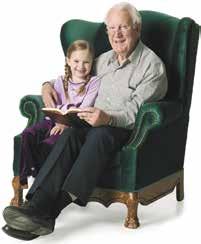For more on this story, please visit www.lasierra.edu/news.
Two-Part COVID-19 Screening Forms Effective Stop-Gap at La Sierra
PHOTO: NATAN VIGNA
W
La Sierra University student and dorm resident assistant Benae Anderson participates in a saliva testing clinic on April 12.
idespread testing has long been touted by public health officials as one of the best ways to control the COVID-19 pandemic and save lives, but the process can be cost-prohibitive. Toward maintaining the safety of its campus while reining in expenses, La Sierra University in February implemented a two-part testing process that replaces a contracted service and utilizes a less invasive method that was developed by one of its biologists and his research colleagues. Following a five-month pilot, a weekly saliva-based screening for COVID-19 was initiated Feb. 16 for the limited number of students and employees who are allowed to study or work on campus during its closure due to the pandemic. It is used in concert with a new, “gold standard” rapid point-of-care PCR Cepheid GeneExpert Express molecular testing system purchased last fall to verify positive results from the saliva-based model. The two-part system stands to save the university tens of thousands of dollars monthly while producing quick results and maintaining the safety of the campus community. Since February, more than 2,500 saliva specimens have been collected during weekly COVID testing clinics in the Alumni Pavilion. Saliva samples are collected in small vials, replacing the nasal swab specimen-gathering method used at many public testing sites. The saliva samples are then processed in a lab in La Sierra’s Price Science Complex; a change in the solution from a bright pink to a clear yellow signals a positive test. The few tests flagged by this process indicating possible positivity for COVID activated immediate isolation procedures while results were verified or nullified by the rapid PCR system. A website case tracker reports any active Covid cases weekly with one active case listed as of April 13. The saliva test in use at La Sierra was developed by associate professor and virologist Arturo Diaz and his colleagues at the University of Wisconsin-Madison. He then modified the protocol in his lab for use on La Sierra’s campus. “Our current procedure is that individuals who test positive by the saliva test are immediately contacted and required to obtain a PCR test through La Sierra’s Student Wellness center and self-isolate until the results of that test are known,” Diaz said. “We can run about 20 saliva tests for the cost of what the university was being charged for one [contracted] PCR test.” The saliva-based tests, which take about two hours, cost about $6 apiece, with the university covering the expense for students and employees. ____________________ By Darla Martin Tucker
La Sierra University May 2021 35


















